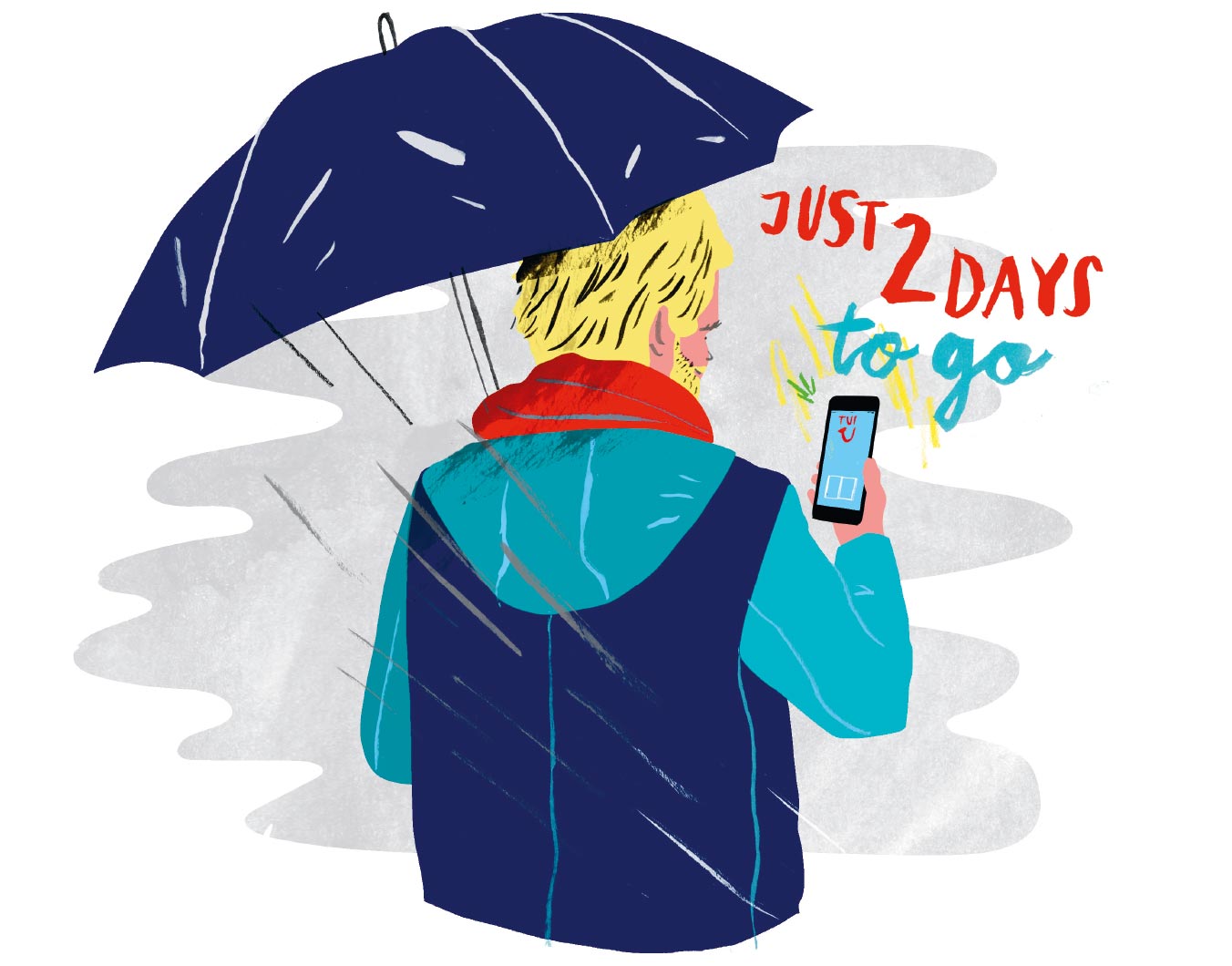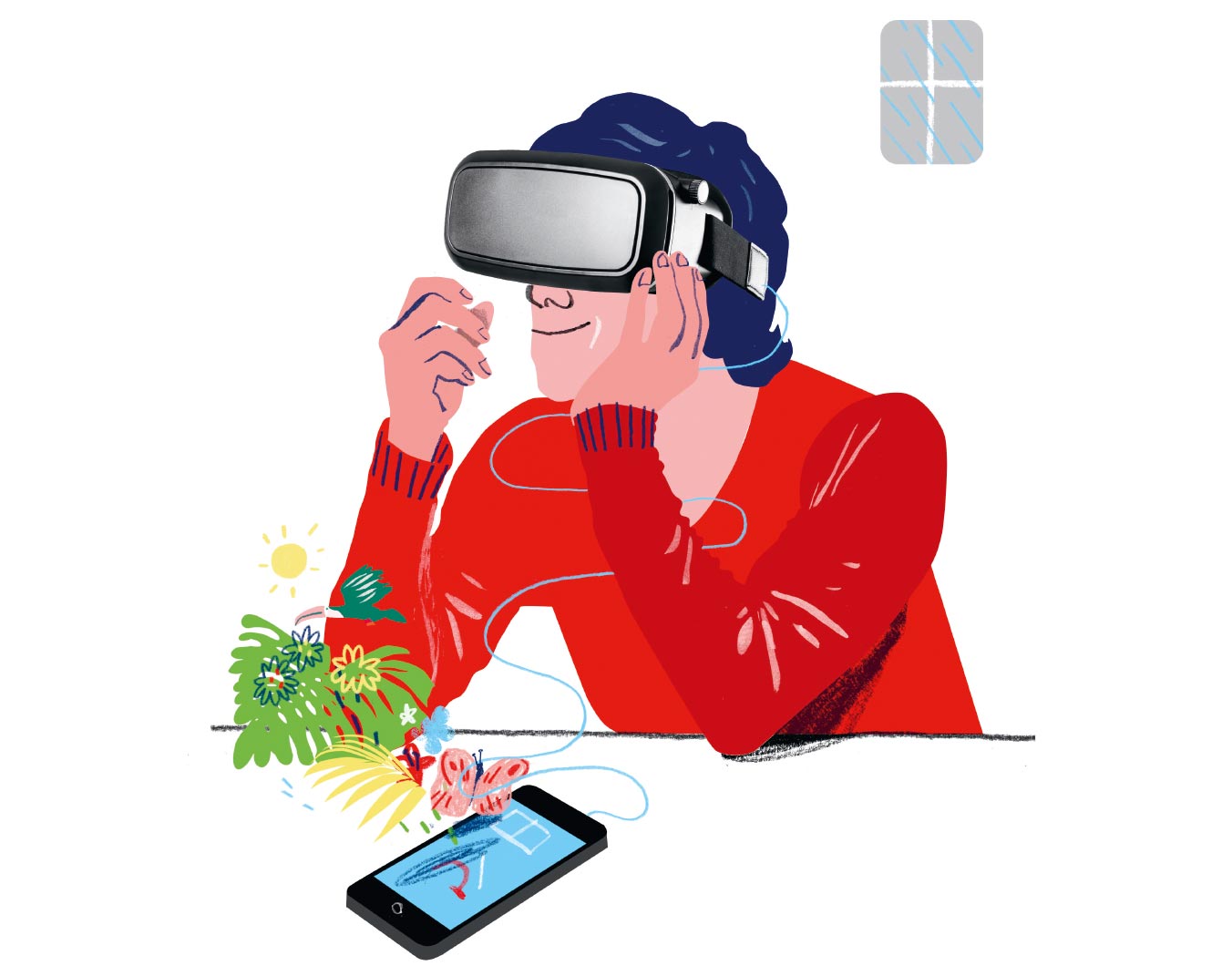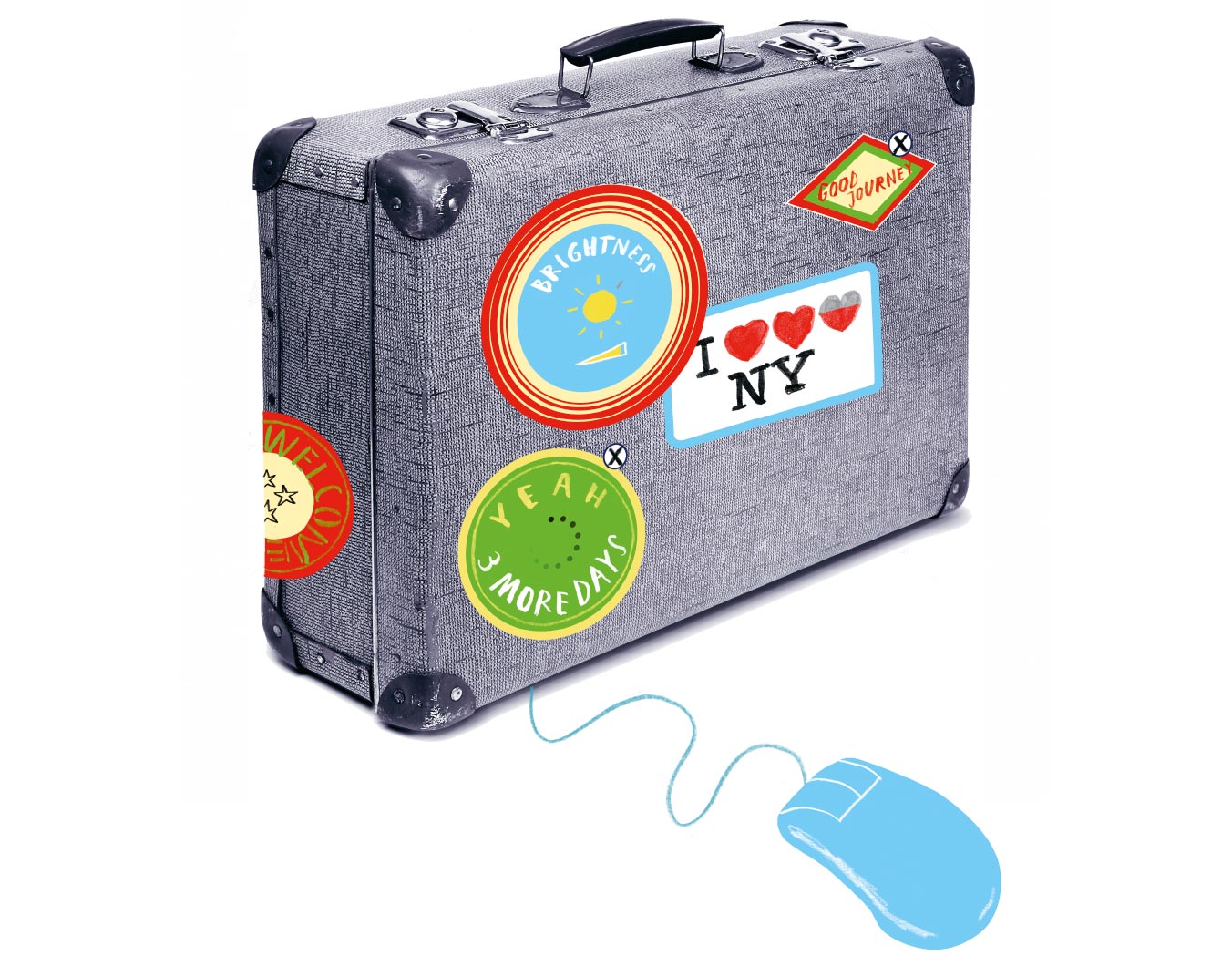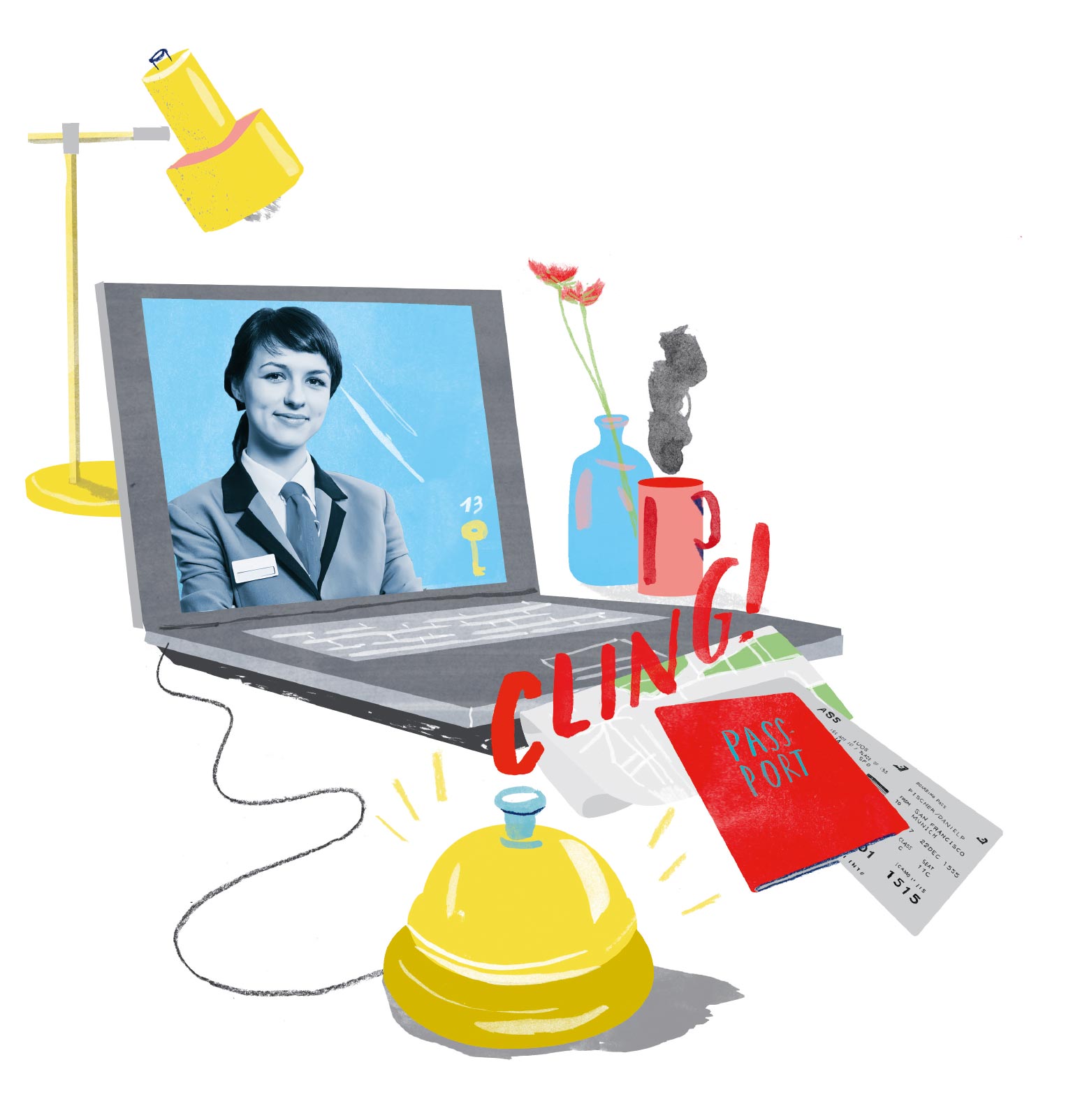Internet and smartphones are now part and parcel of people’s daily lives – and of their holidays, helping them choose a destination, book a trip and fine-tune the details: TUI’s IT teams are doing all they can to perfect the user experience for customers and help them tap the full potential of their holiday.
Travel trends 4.0
Everyone is talking about Industry 4.0 and the fully digitised value chain. In tourism too, many aspects of digitisation now play a big role.
“We aim not just to meet customer expectations, but to exceed them – at every digital touchpoint.” Sharon Lowrie has set the bar high for herself and her team. As head of TUI’s Mobility Hub in London, which opened in 2014, she’s at the heart of TUI’s innovative customer services. In a brightly lit office in the heart of the city, the 45 creative minds she oversees are developing a range of digital products. The purpose of all this effort, here and in the Group’s other IT workshops, is to ensure customers can access all the information they need on their smartphone or computer whenever they want it, whether they are planning a trip or already enjoying their holiday.
Mobile internet
Smartphones and tablets are replacing desktop computers to access the Internet. Every other page hit already comes from a mobile device, according to global statistics kept by the web traffic analysts at StatCounter.
TUI App
One keystone is the TUI App for tablets and smartphones. This free, award-winning digital assistant gives customers all the information they need about their holiday from booking to hotel. As soon as the travel bug bites, the user can come here for inspiration and check out suggestions that reflect earlier booking choices. The app also contains details of leisure activities on offer in hotels and additional excursions that can be booked. To enhance the joys of anticipation, the app includes a countdown to departure and a chance to share data about the trip and destination with friends via social media.
The TUI App comes with data about the local weather and climate, a currency convertor and reminders about when and how to check in for a flight. Soon customers can also use the app to check into a hotel and book a restaurant. There are plans to include videos and interactive maps in the application. Of the 2.5 million active users in the last financial year, 450,000 were based in Germany, but the app is also available in Sweden, Denmark, Finland, Norway, the Netherlands, Belgium, Ireland and the United Kingdom.
Virtual Reality (VR)
By 2025 VR devices and software will probably generate global sales worth 80 billion US dollars, estimates the investment bank Goldman Sachs.
360-degree videos and virtual reality headsets
Apart from simple photographs and clips, TUI is increasingly placing 360-degree videos of its destinations online. Sitting at their desktop computer, or with the aid of their smartphone, customers can now undertake a virtual tour of hotel rooms and suites, swimming baths, gyms and restaurants, or take a trip to the beach and the pool area.
For an even more vivid and detailed impression, they can don a virtual reality headset of the kind now used for computer games and in research. The glasses project a 3-D image of the destination and react to movement: by turning their head, wearers can look around just as if they were already in the hotel or on the beach.
Customers love these VR goggles and, once they’ve used them, want to set off right away. The headsets are already in use in some travel stores in France and the United Kingdom, but customers in German outlets will soon be able to enjoy this virtual immersion in potential destinations too.
Wearables
Technical devices worn on the body are on the rise. In Europe alone, sales are expected to top four billion US dollars by 2020, says business consultancy A.T. Kearney. That is twice the existing volume.
TUI Smartband
The Mobility Hub has trialled another development, this time with a focus on the hardware: the TUI Smartband looks a bit like a fitness bracelet. Hotel guests were able to use it to unlock their room door or make a cashless payment in the hotel bar and restaurant along with other functionalities. Available in a wide range of colours, the wristband can communicate with a smartphone via Bluetooth, letting guests keep an eye on their budget with the help of the TUI App.
Besides, this versatile wristband is waterproof, so the wearer could keep it on while swimming. That made it safer than a key or a credit card. Users were clearly tuned in to the many benefits: during test runs at two resorts in Greece and Turkey, holidaymakers were delighted. 98 per cent of respondents said they would recommend the Smartband to their friends and family. We’re now considering other opportunities for this technology elsewhere.
Cross-channel
In today’s world, most marketing concepts are founded on intelligent cross-channel networking. That includes different media as well as the direct encounter at point of sale.Personalisation
The content displayed by a website or app can be programmed to reflect the user. Tailormade content draws on huge quantities of data, but links it to personal features and preferences.
Cabin Crew App
TUI has likewise developed apps for its employees to support smooth, personalised customer service. The iPad cabin app, for example, simplifies pre- and in-flight procedures and allows cabin crew to get through the day without paperwork. Who is on the crew, how many passengers have booked the flight, are there any people with special requirements among them? Cabin attendants can load the answers to these and other questions onto their iPad in advance and access them later offline.
The app also makes it easier for cabin and ground staff to work together. Admin, for example, can post feedback questionnaires. Every flight attendant can fill these in offline, and as soon as the iPad identifies a new Wi-fi connection, it will send the data back to the right department at TUI. Similarly, the cabin crew can draw up reports about incidents or irregularities during the flight; these will also be synchronised at once when a Wi-fi connection is available again.
Cabin attendants have an in-flight retail app for selling drinks, snacks and duty-free goods during the trip. It records items sold including price, tots up the overall cost of the order and enables cashless payments via a Bluetooth connection to a debit or credit card reader. On many flights, customers will be able next year to select and pay for their in-flight snacks and duty-free goods in advance. The crew can download the details onto their iPads. Based on the seating plan, they can then deliver the items straight to the passenger and address them by name.
Where next?
These examples illustrate the irresistible advance of digitised customer service. Cloud computing is already yielding concrete benefits for TUI customers at many points on their journey. Nevertheless, the company’s IT architects have other ambitious aims in their sights. The TUI App is destined to become TUI’s biggest digital sales channel. With this in mind, TUI’s IT teams are working away not only at numerous data improvements, but on whole new projects. One of these is ‘big data analytics’, which will enable us to pool relevant information about customer bookings and travel behaviour so as to generate tailormade personal offerings – yet another step on the road to ever smarter digital services for an optimised customer experience.


